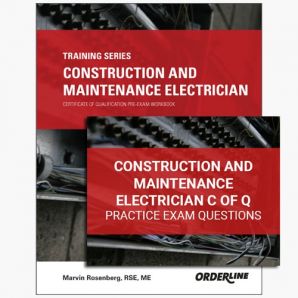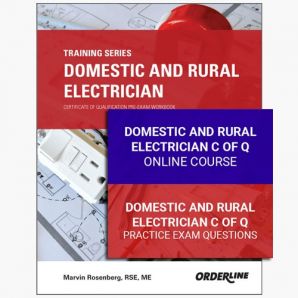How do “Construction & Maintenance” and “Domestic & Rural” electricians compare?
Both, the Construction and Maintenance “C & M” and the Domestic and Rural “D & R” electricians, work in the construction sector of the electrical trade.
So, what do C & M electricians actually do to practice their trade?
That question can best be answered with the scope of practice for a C & M electrician:
- lays out, assembles, installs, repairs, maintains, connects and/or tests electrical systems
- plans installations from blueprints, sketches and specifications, and installs all electrical and electronic devices
- systematically diagnoses faults in electrical and electronic components, as required
- measures, cuts, threads, bends, assembles and installs conduits and other electrical conductor raceways
- splices and terminates electrical conductors
- tests electrical and electronic equipment to ensure that they are functioning properly
What is the worksite for a C & M electrician?
- residential, commercial, industrial and institutional
So, what do D & R electricians actually do to practice their trade?
That question can best be answered with the scope of practice for a D & R electrician:
- lays out, assembles, installs, repairs, maintains, connects and/or tests electrical systems
- plans installations from blueprints, sketches/specifications, and installs all electrical and electronic devices
- systematically diagnoses faults in electrical and electronic components
- measures, cuts, threads, bends, assembles and installs conduits and other electrical conductor enclosures
- splices and terminates electrical conductors
- tests electrical and electronic equipment to ensure they are functioning properly
What is the worksite for a D & R electrician?
- houses, small dwellings and farms
So, specifically, what’s the exact difference in the work description or scope of practice for C & M and D & R electricians?
As we have seen above, the scope of practice for the D & R electrician is the same as that of a C & M electrician, that is, they both work in construction, erection, repair, remodelling or alteration of electrical projects. However, the exception or the actual difference is that the D & R worksites are limited to:
- houses or multiple dwelling buildings containing six or fewer dwellings, or
- buildings or structures used for farming.
As well, the performance of maintenance to electrical equipment worksites are limited to:
- houses or multiple dwelling buildings containing six or fewer dwellings, or
- farms
In Ontario, the C & M trade code is 309A while the D & R trade code is 309C and both of these construction sector electricians are classified as compulsory trades as denoted by the number 3 in their respective trade codes. The compulsory trade designation means a trade in which registration as an apprentice, journeyperson candidate or as a journeyperson is mandatory and therefore, required by law to be members of the Ontario College of Trades. Having said that, only the C & M is available to be a part of the Interprovincial Red Seal Program—the national standard for the trade across Canada —under the title Construction Electrician.
In Ontario, both the C & M and the D & R are eligible for a Masters Electrician License, which we will leave, for now, as another topic for another day.


